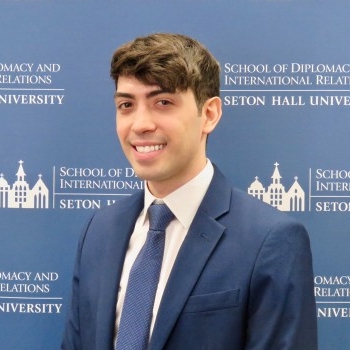
The Crossroads between War and Peace: Yemen, ‘A Fragile Vessel’
In December of 2018, Yemenis’ Houthi leaders and the Saudi-led coalition met in Sweden where they all agreed to the Stockholm agreement in an effort to end the four-year war in Yemen. It encompasses four key elements, three of which are a prisoner swap, the formation of a committee to discuss the future of the contested city of Taiz, and a commitment for the Houthis and the government to reconvene at the end of December. Its fourth component, also known as the Hodeida agreement, aimed at a ceasefire and the creation of a demilitarized zone around the country’s vital Red Sea trade corridor through a series of withdrawals by rival Yemeni forces.
To the dismay of United Nations (UN), Houthi fighters and Saudi-backed pro-government forces renewed fighting in serious breach to a ceasefire hours after the UN Security Council met to discuss the situation in Yemen on May 15, 2019, in New York. It appears that Martin Griffiths’ words, Special Envoy of the Secretary-General for Yemen, could not have been truer when he called the situation in Yemen “a fragile vessel.”
Griffiths, with airs of particular accomplishment, began his report to the Security Council praising the ceasefire and withdrawing of Houthi forces from all three ports of Al-Hodeida, Saleef, and Ras Issa under United Nations monitoring between May 11 and 14, 2019, all of which are a lifeline for millions of people threatened by starvation as it is the main entry point for food imports and aid. As such, Griffiths informed that the UN Development Programme (UNDP) is preparing to send a team to the Hodeida port to improve productivity and efficiency, repair facilities, and upgrade berths which is an unprecedented achievement in the four-year war.
The civil war in Yemen began in 2014 after Houthi insurgents- an Islamic religious and political movement with a history of rising up against the Sunni government- took control of the capital, Sana’a. Houthi demanded lower fuel prices and a new government. Negotiations took place but failed, leading to a seizure of the presidential palace and the resignation of President Abd Rabbu Mansour Hadi and his government. The next year, in 2015, a coalition of Gulf States led by Saudi Arabia launched a campaign of economic isolation and air strikes, aided by U.S. intelligence and logistical support.
Four years later, Yemen has become the world’s worst humanitarian crisis. In his brief on Yemen to the UN Security Council, Mark Lowcock, Under-Secretary-General for Humanitarian Affairs and Emergency Relief Coordinator, explains the progress and challenges ahead. On the current humanitarian crisis, Lowcock confirms that “the specter of famine still looms” with eight million people at risk and another ten million people in great need of emergency food assistance to survive. A resurgent cholera outbreak has already affected 300,000 people since January 2015. On current challenges, as seen hours after the UN Security Council meeting, violence still rages. In four years, over 15,000 people have been killed or injured, including 900 civilians since the year began. Aid operations have suffered from main routes destroyed or closed. Humanitarian agencies and traders now relay on mountain passes and insecure areas with numerous checkpoints.
Lowcock calls Yemen, “the world’s largest humanitarian operation.” Between January and February of 2019, 130 agencies worked together to provide 9.8 million people with food, water, healthcare, and other assistance. In March, the World Food Programme fed over 10.6 million people. In April, a cholera vaccination campaign reached 1.1 million people in Sana’a. Regardless, Lowcock asserts that only twenty percent of the required resources to implement the 2019 UN response plan has been provided.
Adding to the list of progress and challenges ahead, Henrietta H. Fore, Executive Director of United Nations Children’s Fund (UNICEF), explained the children’s situation. The life of more than 7,300 children have been claimed since the war began, and the war still rages across 30 active zones-home to nearly 1.2 million children. Over 360,000 children suffer acute malnutrition, and as appalling as it is, half the children under five- 2.5 million- are stunted. Also, a hundred-thirty-five thousand suspected cases of cholera were reported since the beginning of this year alone despite the delivery of over two million doses of oral cholera vaccines in 2018.
As Griffiths, Lowcock, and Fore urged warring parties to allow peace talks to increase in the next negotiations, new conflicts are taking place. At the same time, it seems that as humanitarian efforts grow, so does the health crisis. Mainly for seek, malnourished, stunted, and injured children. To make matters worse, half of the country’s hospitals, clinics, and water systems are in ruins. Yemen, already one of the least-developed countries before the war began has lost two decades worth of development gains according to a new report commissioned by the UNDP.
Are the negotiation talks an elusive endeavor where in reducing one vulnerability another is increased? Will the Houthis withdraw from more territories when recent evidence shows a surge in violence in Abs, Haijah, Taiz, Al Dhale’e, and elsewhere? Can Yemen, and the world, afford to lose a generation of children? It seems that the war is getting worse by the hour, with thousands of children and civilians as casualties. “It seems that time is running out, and we are failing this test,” concluded Henrietta H. Fore.
